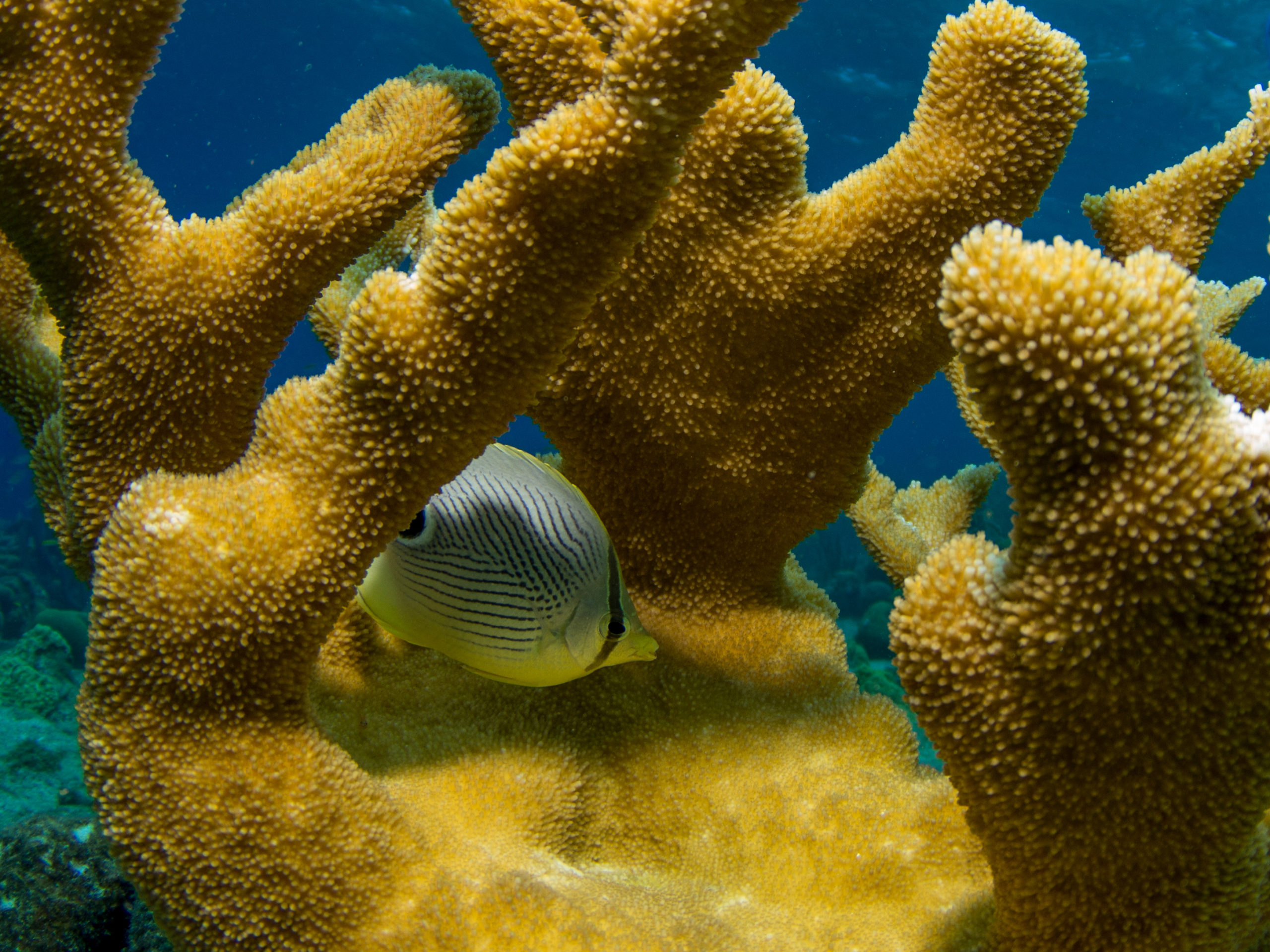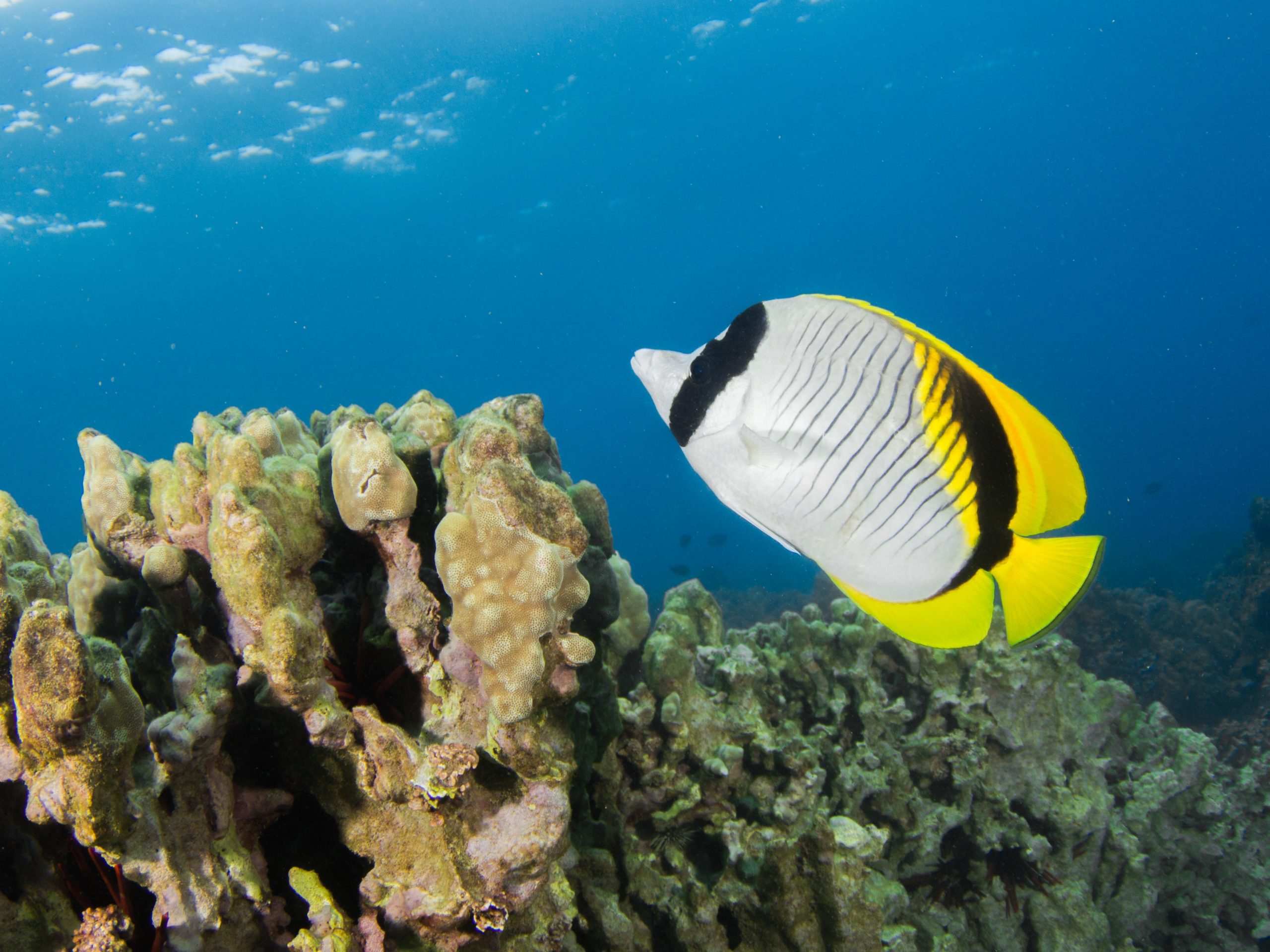Butterflyfish are a favorite for many reef lovers, and their unique feeding habits make them coral reef obligates (they are only found on coral reefs). Did you know that some of the 129 species of butterflyfish (Chaetodontidae) are “mucus munchers?”

As strange as it might sound, some butterflyfish take advantage of energy-rich coral mucus as a primary food source. Corals produce mucus as a protective layer or use its stickiness to trap food. Butterflyfish feed on this nutrient rich layer and take advantage of this easy to consume food source. Other butterflyfish species feed on coral polyps or small invertebrates and plankton.

Butterflyfish are fairly small and laterally flattened – they look like a disc with rounded fins. They are found around the world on coral reefs and are brightly colored, often with some combination of yellow, black and white. Many butterflyfish species are monogamous and territorial. You will often see a pair swimming together on a reef, although some species roam farther and in larger groups.

They are active in the daytime and hide in crevices at night to avoid predators. When butterflyfish reproduce, they release buoyant eggs that float with plankton that once hatched, go through a larval stage where the tiny fish have plate-like armor, before growing into miniature adults. Next time you visit a reef, keep an eye out for these beautiful reef fish and see how many species you can identify.
